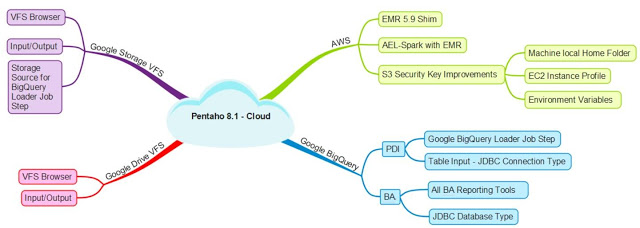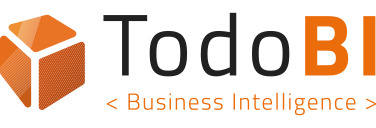
Pentaho 8.1 ya esta disponible (aquí para descargar de Sourceforge ) y que mejor que Pedro Alves para contarnos. Os dejamos las principales novedades y en que versión (EE o CE) están disponibles:
Cloud Google Storage (EE)
Google BigQuery – JDBC Support (EE/CE)
Google BigQuery – Bulk Loader (EE)
Google Drive (EE/CE)
Analytics over BigQuery (EE/CE, depending on the tool used)
Big Data / Adaptive Execution Layer (AEL) Improvements
Bigger and Better (EE/CE)
Sub Transformation support (EE/CE)
Big Data formats: Added support for Orc (EE/CE)
Worker Nodes (EE)
New Streaming Datasources: MQTT, and JMS (Active MQ / IBM MQ) (EE/CE)
Safe Stop (EE/CE)
Streaming Dataservices (EE/CE)
CTools and Streaming Visualizations (EE/CE)
Time Series Visualizations (EE/CE)
Data Exploration Tool Updates (EE)
Additional updates:
● Salesforce connector API update (API version 41)
● Splunk connection updated to version 7
● Mongo version updated to 3.6.3 driver (supporting 3.4 and 3.6)
● Cassandra version updated to support version 3.1 and Datastax 5.1
● PDI repository browser performance updates, including lazy loading
● Improvements on the Text and Hadoop file outputs, including limit and control file handling
● Improved logging by removing auto-refresh from the kettle logging servlet
● Admin can empty trash folder of other users on PUC
● Clear button in PDI step search in spoon
● Override JDBC driver class and URL for a connection
● Suppressed the Pentaho ‘session expired’ pop-up on SSO scenarios, redirecting to the proper login page
● Included the possibility to schedule generation of reports with a timestamp to avoid overwriting content
In summary (and wearing my marketing hat) with Pentaho 8.1 you can:
●
Deploy in hybrid and multi-cloud environments
with comprehensive support for Google Cloud Platform, Microsoft Azure and AWS for both data integration and analytics
●
Connect, process and visualize streaming data,
from MQTT, JMS, and IBM MQ message queues and gain insights from time series visualizations


